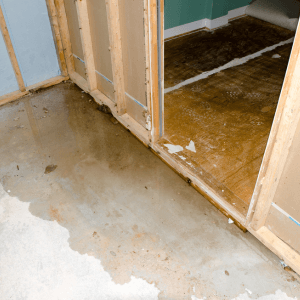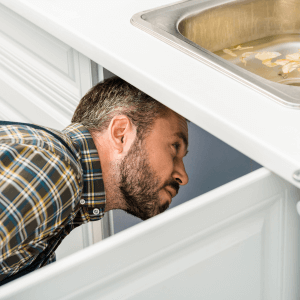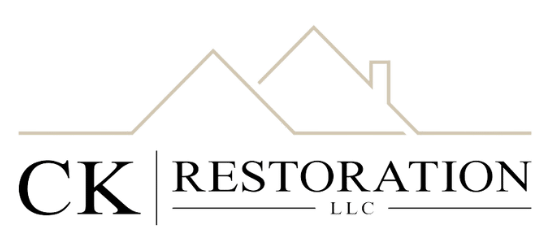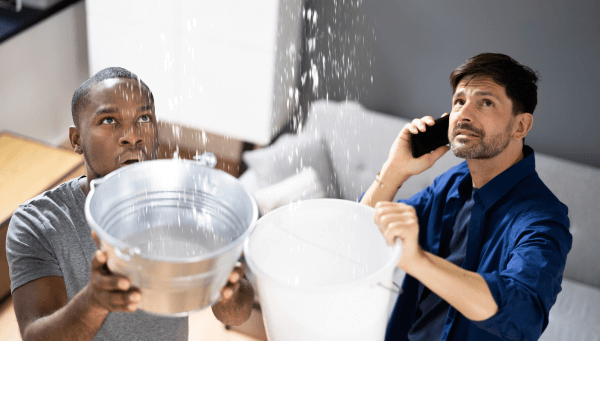Y’all, let’s talk water damage.
We know water damage isn’t the most thrilling topic, but trust us, knowing what category water damage you’re up against can make a huge difference in how you handle the situation—potentially saving you from a lot of headaches and expenses. Whether you’re nestled in the Hill Country or living it up downtown, water damage can hit anywhere, anytime. So, let’s explore the three main categories of water damage to help you understand what you might be dealing with and how to tackle it.

The Three Categories of Water Damage
The Institute of Inspection, Cleaning and Restoration Certification (IICRC) has categorized water damage into three levels. Each category reflects the potential level of contamination and thus the severity of the cleanup required. Let’s dive in to these categories:
(However, we don’t recommend you literally dive in to any of these!)
Category 1: Clean Water
Category 1 water damage is the least concerning of the three. It’s what we might consider the “least bad” type of water damage, though that doesn’t mean it’s without issues. Clean water comes from sources that are not contaminated with harmful substances.
Some common causes are:
- Broken Water Supply Lines: Often caused by pipe corrosion or freezing temperatures. Common in older homes or poorly insulated areas.
- Overflowing Sinks or Tubs: Can be due to clogs or user error, such as leaving the water running.
- Melting Ice or Snow: Common in regions with heavy snowfall or ice accumulation.
Potential Impacts
- Structural Concerns: Even clean water can weaken building materials like drywall, wood, and insulation if not addressed promptly.
- Mold Growth: Left untreated, clean water can still lead to mold issues, especially in hidden or hard-to-reach areas.
While Category 1 water damage doesn’t pose a major health risk, it still needs prompt attention. Even clean water can become problematic if left unattended.
Category 2: Gray Water
Gray water is where things start to get a bit more serious. It’s considered significantly contaminated and can harbor bacteria and viruses.
Common sources of gray water include:
- Dishwashers: Can leak or overflow, spreading food particles and detergent.
- Washing Machines: Leaks or overflows can spread detergents and soil.
- Toilet Overflows (without fecal matter): Often caused by blockages or mechanical failures.
- Sump Pump Failures: Typically due to power outages or mechanical issues, leading to water accumulation in basements.
Potential Impacts
- Health Risks: Gray water contains contaminants that can cause illness if not managed properly.
- Material Damage: Can lead to more severe damage to carpets, fabrics, and structural components.
If you’re dealing with gray water, you’ll want to act swiftly. Prolonged exposure or improper handling can lead to mold growth and health hazards, so addressing it quickly can prevent further complications.
Category 3: Black Water
Black water is the worst-case scenario. Category 3 is the most severe type of water damage and poses serious health risks. Black water is highly contaminated with bacteria, viruses, and other pathogens. Typical sources include:
- Sewage Backups: Can be caused by blockages in the sewer system or septic tank issues.
- Floodwater: Often carries contaminants from streets and environments.
- Water from Broken Pipes Contacting Sewage: Pipes that burst and come into contact with sewage systems can spread harmful pathogens.
Potential Impacts
- Severe Health Risks: Black water is highly contaminated and poses significant health hazards, including exposure to pathogens and toxins.
- Extreme Property Damage: This type of water damage can lead to extensive damage to building materials, requiring extensive remediation.
Black water damage is not just a matter of cleaning up; it’s a serious health hazard that requires immediate professional intervention. Handling black water on your own is not advisable due to the risk of exposure to harmful pathogens.
Why Does This Matter?
Understanding the category of water damage is crucial for several reasons:
1. Safety
Knowing the contamination level helps you take the right precautions to protect yourself and your family. For example, while clean water might only require basic cleanup, gray and black water involve more stringent safety measures to avoid health risks.
2. Insurance Claims
Your insurance policy might have specific clauses or coverage limits depending on the category of water damage. Accurate categorization ensures you can file a claim correctly and receive the appropriate compensation for the damage.
3. Restoration Process
The cleanup and restoration process varies depending on the type of water involved. Clean water may only need a thorough drying and cleaning, while gray and black water require more extensive measures, including disinfection and specialized equipment.
Read more about the restoration process here in this blog post.
What to Do Next
If you’re facing water damage, the first step is to assess the situation. Determine the source of the water and its contamination level. Here’s a quick guide on what to do next:
- Identify the Source: Locate where the water is coming from and if it’s contaminated.
- Contain the Damage: If it’s safe to do so, try to contain the water to prevent it from spreading. This might involve turning off the water supply or using buckets to catch leaks.
- Contact a Professional: Reach out to a professional restoration company like CK Restoration. Our team has the expertise and equipment to handle any level of water damage, from minor leaks to major floods.
- Act Quickly: Time is critical when dealing with water damage. The sooner you address the problem, the less damage will occur and the easier it will be to restore your property.
- Document the Damage: Take photos and notes of the damage for insurance purposes. This documentation will be useful when filing a claim.
Preventing Each Category Water Damage

While understanding the categories of water damage is vital, prevention can save you from dealing with these issues in the first place. Here are some proactive steps you can take:
- Regular Inspections: Check your plumbing and appliances regularly for signs of wear or leaks.
- Proper Drainage: Ensure that your property has adequate drainage to handle heavy rain or melting snow.
- Water Alarms: Install water alarms or sensors in areas prone to leaks or flooding, such as basements and near appliances.
- Maintain Gutters: Clean and maintain your gutters to prevent water from overflowing and causing damage.
How CK Restoration Can Help
At CK Restoration, we understand that dealing with water damage can be overwhelming. That’s why we’re here to help you every step of the way. From assessing the damage to complete restoration, our team is dedicated to restoring your home or business to its pre-damage condition.
Want to learn more about water damage prevention or restoration? Check out our other blog posts or reach out to us today!
Need assistance determining the category of water damage in your property? Don’t hesitate to contact CK Restoration. We offer free estimates and are ready to guide you through the process with our professional expertise.
By understanding the different categories of water damage, you’re better equipped to protect your property and health. And remember, CK Restoration is here to provide support and solutions whenever you need them.
Contact CK Restoration today for a free estimate and let us help you navigate through your water damage situation with confidence.

